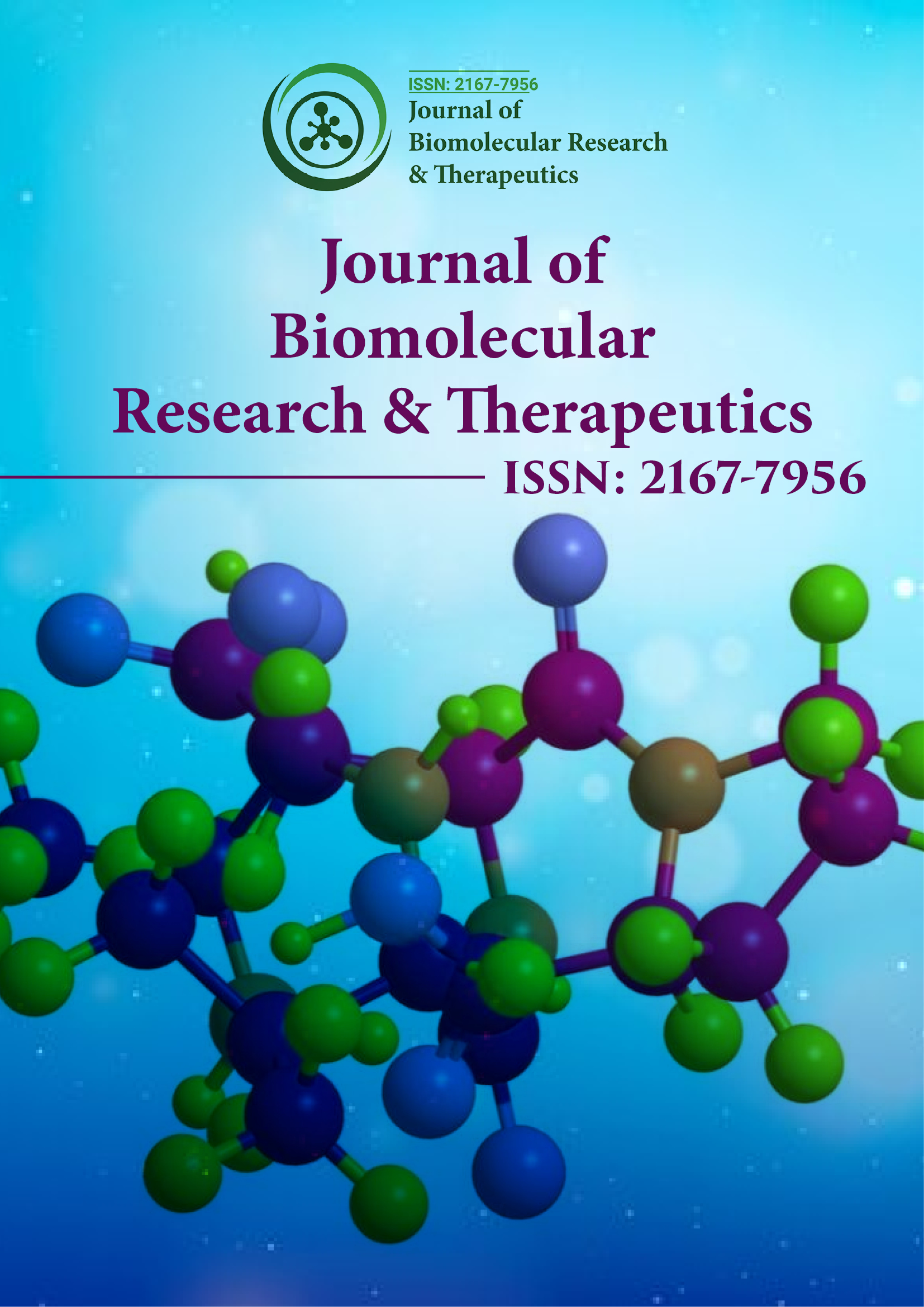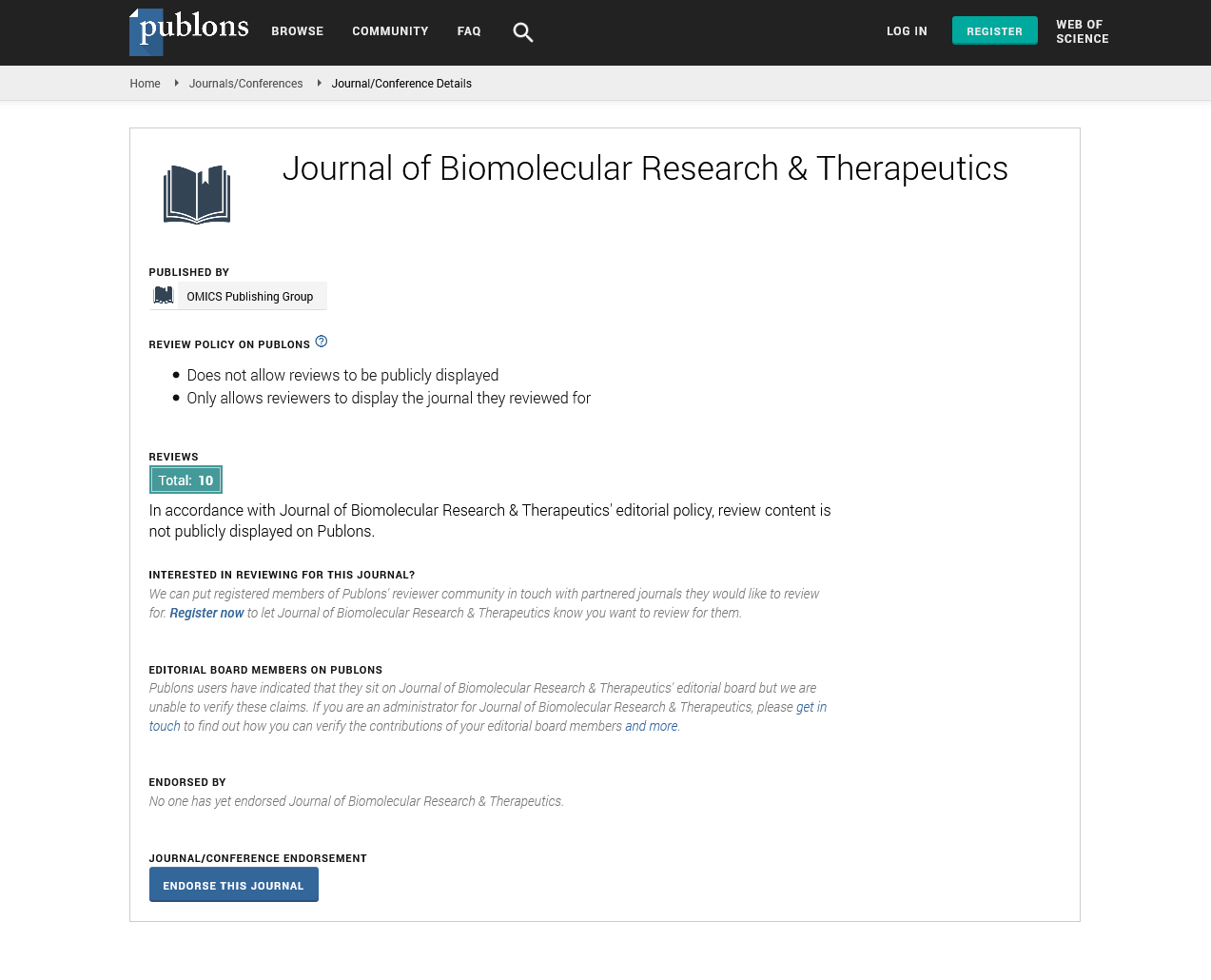PMC/PubMed Indexed Articles
Indexed In
- Open J Gate
- Genamics JournalSeek
- ResearchBible
- Electronic Journals Library
- RefSeek
- Hamdard University
- EBSCO A-Z
- OCLC- WorldCat
- SWB online catalog
- Virtual Library of Biology (vifabio)
- Publons
- Euro Pub
- Google Scholar
Useful Links
Share This Page
Journal Flyer

Open Access Journals
- Agri and Aquaculture
- Biochemistry
- Bioinformatics & Systems Biology
- Business & Management
- Chemistry
- Clinical Sciences
- Engineering
- Food & Nutrition
- General Science
- Genetics & Molecular Biology
- Immunology & Microbiology
- Medical Sciences
- Neuroscience & Psychology
- Nursing & Health Care
- Pharmaceutical Sciences
Commentary - (2022) Volume 11, Issue 8
A brief note on Bioconjucation
Salmon Raj*Received: 20-Apr-2022, Manuscript No. BOM-22-16215; Editor assigned: 21-Apr-2022, Pre QC No. BOM-22-16215(PQ); Reviewed: 05-May-2022, QC No. BOM-22-16215; Revised: 16-Jun-2022, Manuscript No. BOM-22-16215(R); Published: 23-Jun-2022, DOI: DOI: 10.35248/2167-7956.22.11.232
Commentary
Bioconjugation is used in the interface between chemistry and biology. It involves in the establishment of covalent bonds between a biomolecule and another molecule or material. The bioconjugation mainly focus in the biomolecule is a peptide or a protein; however, bioconjugation can also occur in other biological process includes nucleic acids, sugars and particles Bioconjugation include other biological molecules such as peptides, small or large synthetic molecules like drugs or polymers, particulates, or surfaces. Such bioconjugates exhibit a combination of properties and functions unique to each of their individual components and have multiple uses, i.e. for diagnostic and therapeutic purposes, both in vitro and in vivo, or for technical purposes. Appropriate chemical handles must be present on the side of the peptide or protein for bioconjugation to occur. Therefore, it is possible to use naturally occurring functional groups, i.e., amino acid side chain chemistries, or to introduce artificial chemical groups to impart new properties for further binding.
Bioconjugation reagents are most used with neat biomolecules to form multi-component conjugates for specific purposes. However, it can also be used with complex biological samples to capture molecules that interact in a biological system. In particular, molecules undergoing certain bispecific affinity interactions within the cell bind to each other and "freeze" as they bind to each other using certain bifunctional or trifunctional cross-linking agents can be done. Rapid kinetics of certain cross-linking agents with functional groups present in proteins and other molecules can be used to capture low affinities or even transient interactions for subsequent studies. Other methods of studying protein interactions, such as B. affinity chromatography or "pull-down" assays, cannot effectively detect these weak or transient events. Therefore, the search for unknown interacting proteins can be achieved using bioconjugation, which cannot be easily achieved with other techniques. Bioconjugation outlines the main options for capturing interacting proteins using bioconjugation, such as reagent selection and usage.
Microfluidic platform shows conducting diagnostic measurements in clinical settings. One important thing in bioconjugation is the handling of dilute antigens and biomarkers, particularly for purification and enrichment from complex biological fluids. A reversible microchannel surface capture system has been further developed for bioanalytical samples. The release efficiency and accumulation of PNIPAAmantibody conjugates in PNIPAAm grafted poly (dimethylsiloxane) micro channels was studied using a circular helical flow microreactor. Conjugate immobilization and release were restricted by mass transfer to and from the functionalized PNIPAAm surface. Transport and adsorption efficiency depends on the aggregate size of the PNIPAAm-streptavidin conjugate on the LCST and whether the conjugate is heated in the presence of a stimulus-responsive surface or pre-aggregated and then flows over the surface was doing. Mixing and recirculation significantly improve the discharge rate and sharpness of the conjugate when the temperature drops below the phase transition temperature. Protein-polymer conjugate concentrations can be achieved by continuous conjugate flow into a heated recirculate, which allows for near linear enrichment of the conjugate reagent from larger volumes. This capability was demonstrated with the anti p24 HIV monoclonal antibody reagent concentrated 5-fold using this protocol. A pH responsive surface trap was also constructed on the wall of the canal in the same way. These studies provide insights into the mechanism of intelligent capture and release of polymer-protein conjugates in graft channels and show the potential of this purification and enrichment module for diagnostic sample processing.
Citation: Raj S (2022) A Brief Note on Bioconjugation. J Biol Res Ther. 11:232.
Copyright: ©2022 Raj S. This is an open-access article distributed under the terms of the Creative Commons Attribution License, which permits unrestricted use, distribution, and reproduction in any medium, provided the original author and source are credited.

